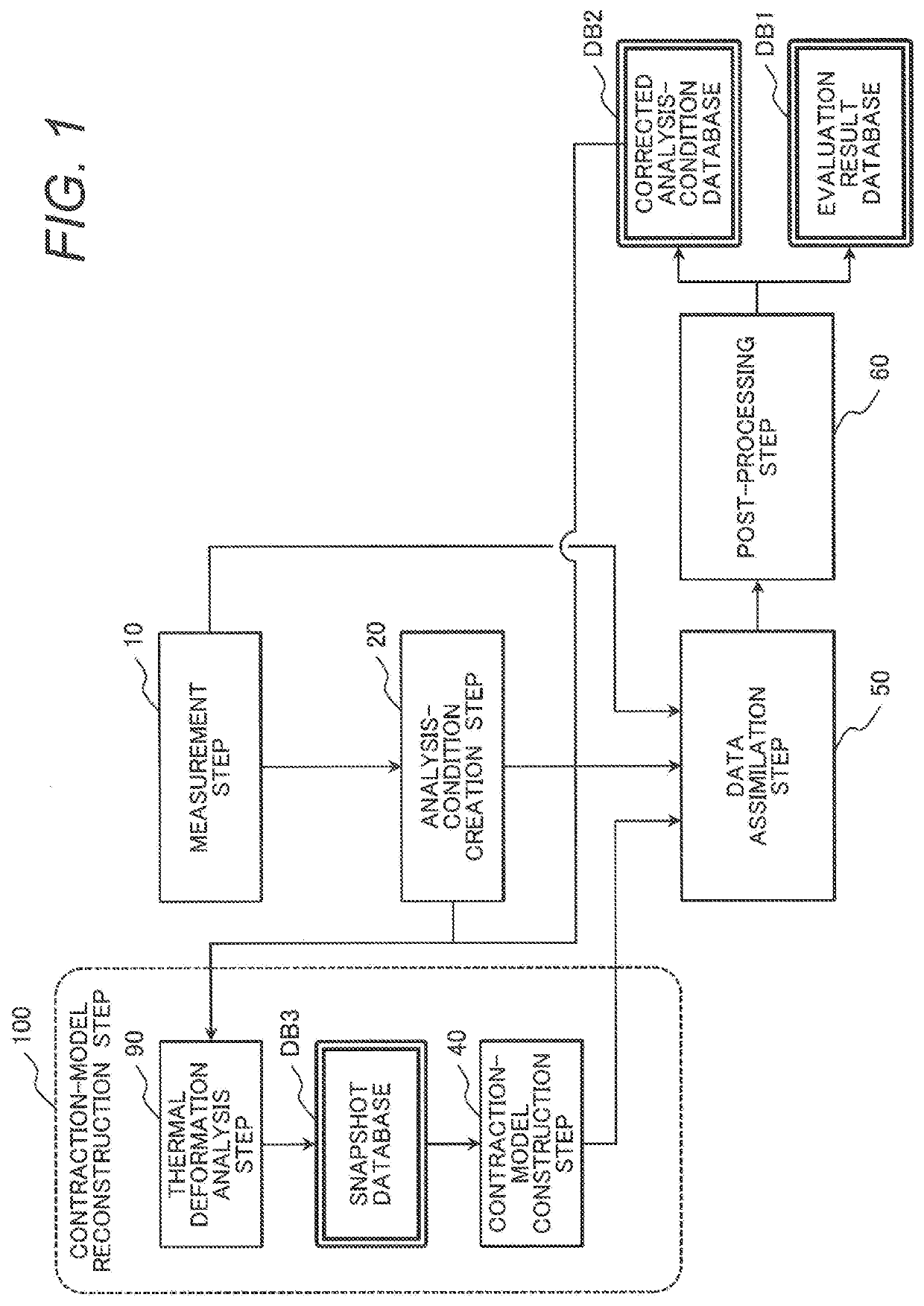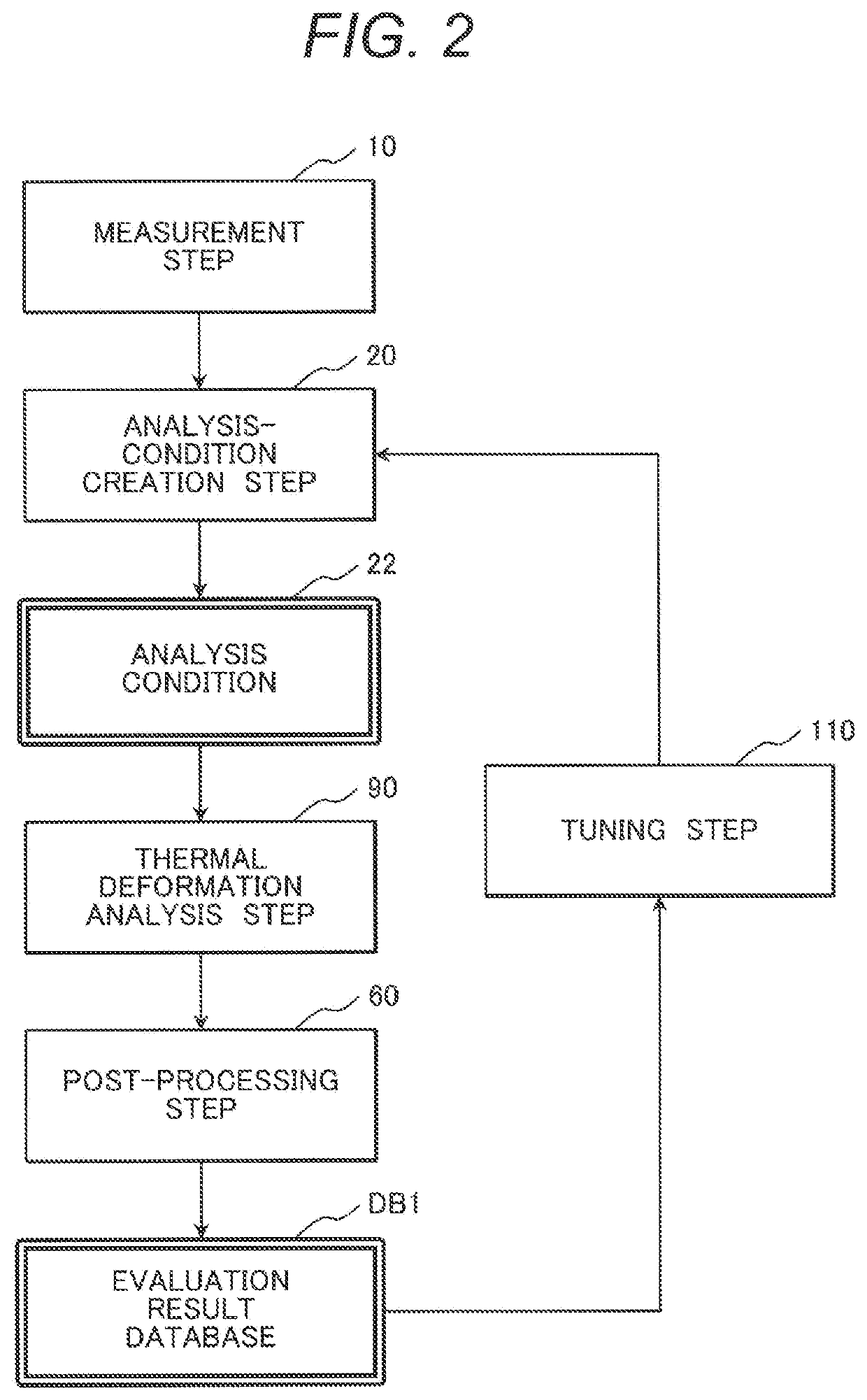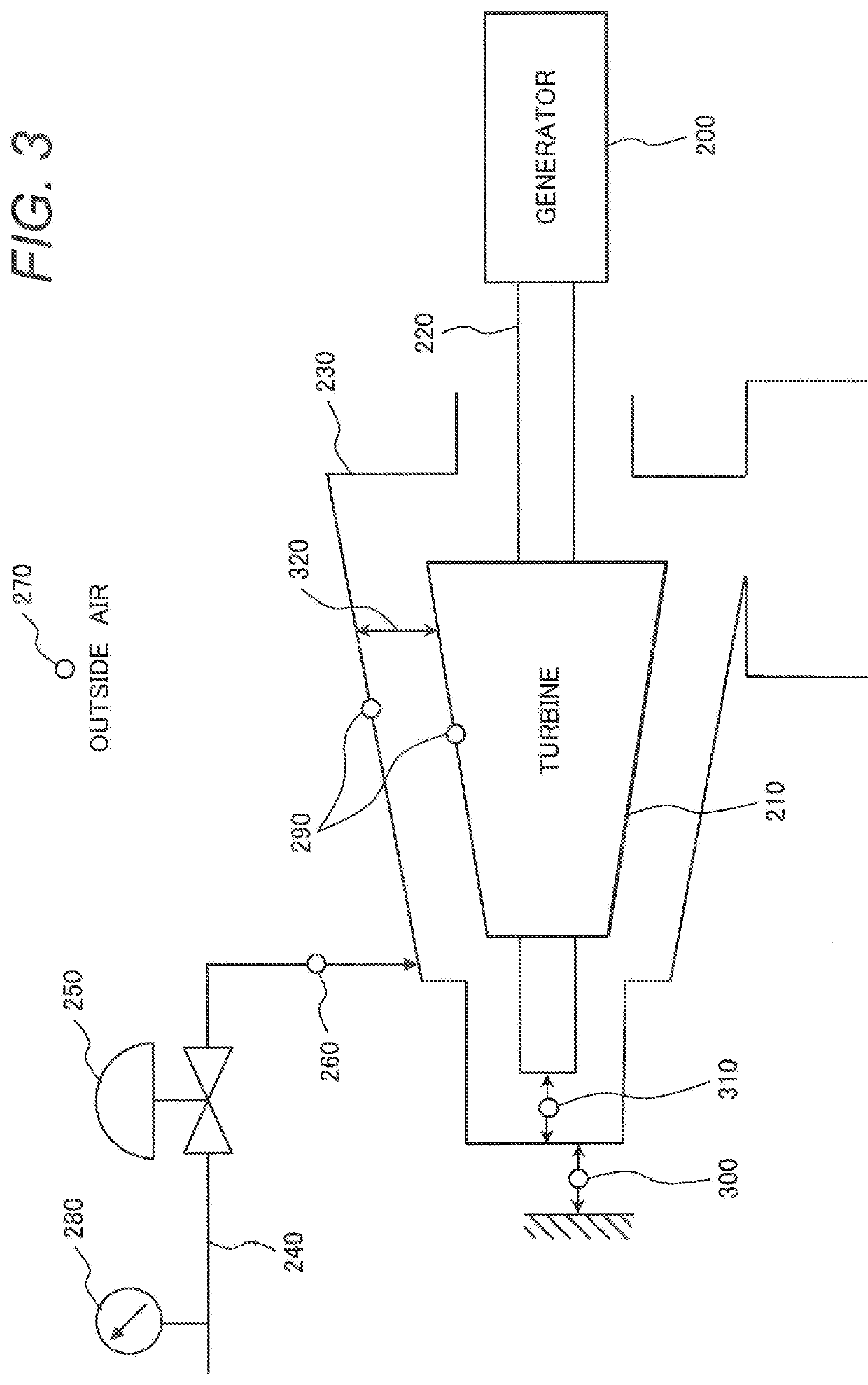Method and apparatus for estimating internal state of thermal component
- Summary
- Abstract
- Description
- Claims
- Application Information
AI Technical Summary
Benefits of technology
Problems solved by technology
Method used
Image
Examples
embodiment 1
[0028]Embodiment 1 of the present invention exemplifies a turbine as a thermal component to which the present invention is applicable, and describes a basic idea to estimate thermal stress or a clearance that is an internal state of the thermal component.
[0029]First, the thermal component, to which the present invention is applicable, is a turbine such as a vapor turbine or a gas turbine or a structure such as a boiler, and the turbine is now described while being illustrated in FIG. 3.
[0030]FIG. 3 shows an exemplary configuration of a power plant configured of a turbine and a generator. The power plant of FIG. 3 includes a generator 200, a turbine 210, a turbine rotor 220 connected to the turbine 210 and the generator 200, a turbine casing 230 accommodating the turbine, a piping 240 supplying a working fluid to the turbine, and a control valve 250 provided in the piping 240.
[0031]In such a power plant, a high-temperature, high-pressure fluid (vapor or gas) as the working fluid is i...
embodiment 2
[0052]In Embodiment 2, the configuration described in Embodiment 1 is specifically described in more detail. FIG. 4 is a view illustrating a method and an apparatus for estimating the internal state of the thermal component according to Embodiment 2.
[0053]To compare the detailed configuration and functions of Embodiment 2 to those of the traditional technique of FIG. 2, Embodiment 2 of FIG. 4 can be recognized such that a step corresponding to the tuning 110 of the traditional method of FIG. 2 is modified into the data assimilation step 50, and a metal-surface heat-transfer-rate condition is directly identified in the data assimilation step 50 to address the above-described problems (inaccurate prediction of time evolution of temperature distribution, and insufficient clearance evaluation accuracy).
[0054]Furthermore, Embodiment 2 uses a contraction model for the data assimilation calculation, so that evaluation time can be advantageously extremely reduced compared with the tradition...
embodiment 3
[0082]In Embodiment 3, a specific example of the contraction-model construction step 40 to construct the contraction model is described using numerical expressions with the method in Embodiment 2 to evaluate the clearance 320 during startup operation using the measurement results of temperature, expansion, differential expansion, and the like.
[0083]First, the following processing steps S2a to S2c are performed for a method for constructing the heat-transfer contraction model 42.
[0084]In the processing step S2a, a snapshot matrix of expression (1) is first constructed.
S1=[X11, . . . ,X1nb_cols_S1] (1)
[0085]In the expression (1), (nb_cols_S1) is the number of node temperature vectors 32 extracted from the snapshot database DB3, X1i is a d dimensional node temperature vector in the snapshot database DB3, and S1 is a d1×nb_cols_S1 snapshot matrix.
[0086]For example, the d1×nb_cols_S1 snapshot matrix S1 (expression (1)), in which a plurality of (nb_cols_S1) d1 dimensional node temperatur...
PUM
 Login to View More
Login to View More Abstract
Description
Claims
Application Information
 Login to View More
Login to View More - R&D
- Intellectual Property
- Life Sciences
- Materials
- Tech Scout
- Unparalleled Data Quality
- Higher Quality Content
- 60% Fewer Hallucinations
Browse by: Latest US Patents, China's latest patents, Technical Efficacy Thesaurus, Application Domain, Technology Topic, Popular Technical Reports.
© 2025 PatSnap. All rights reserved.Legal|Privacy policy|Modern Slavery Act Transparency Statement|Sitemap|About US| Contact US: help@patsnap.com



